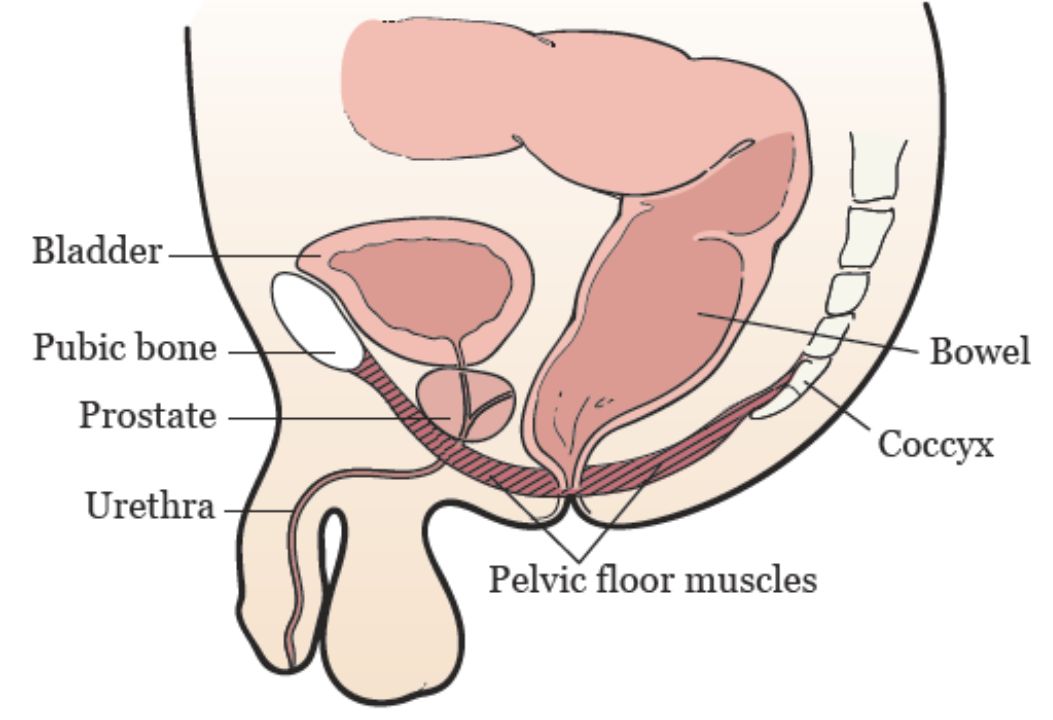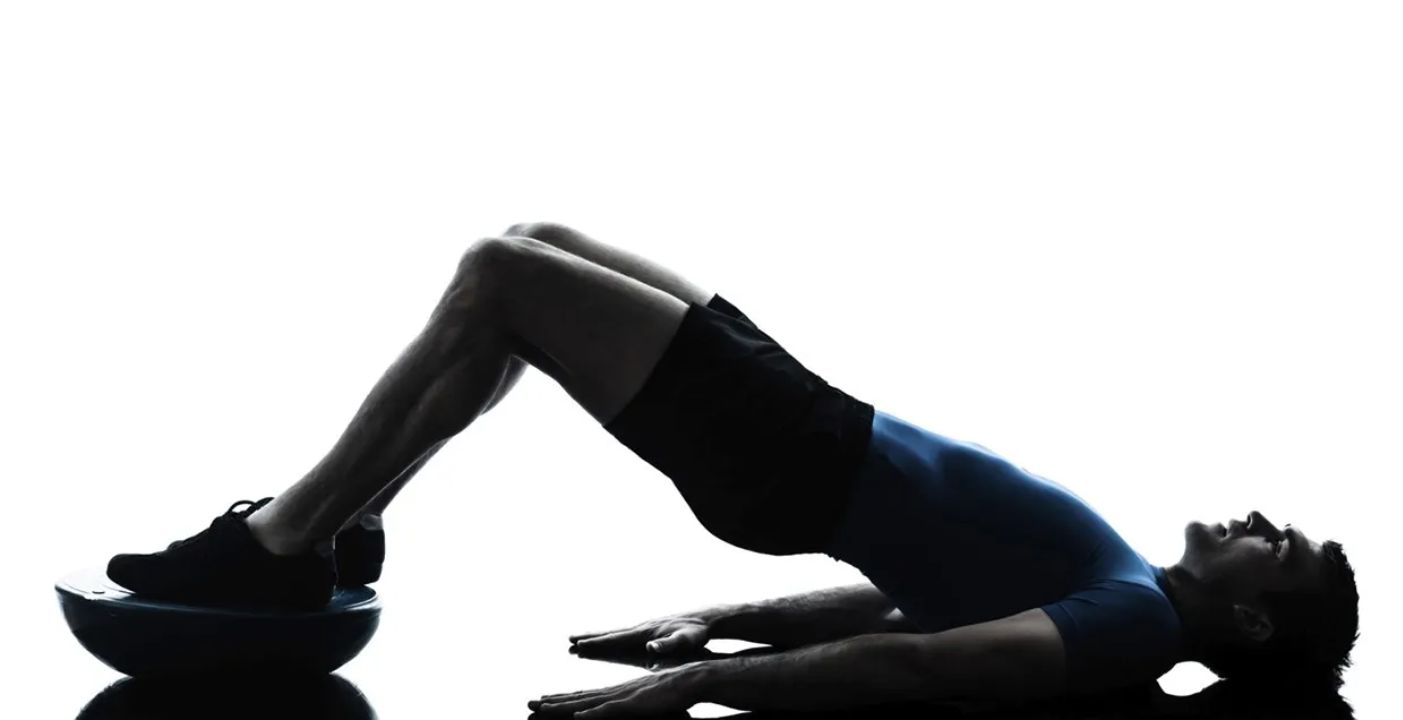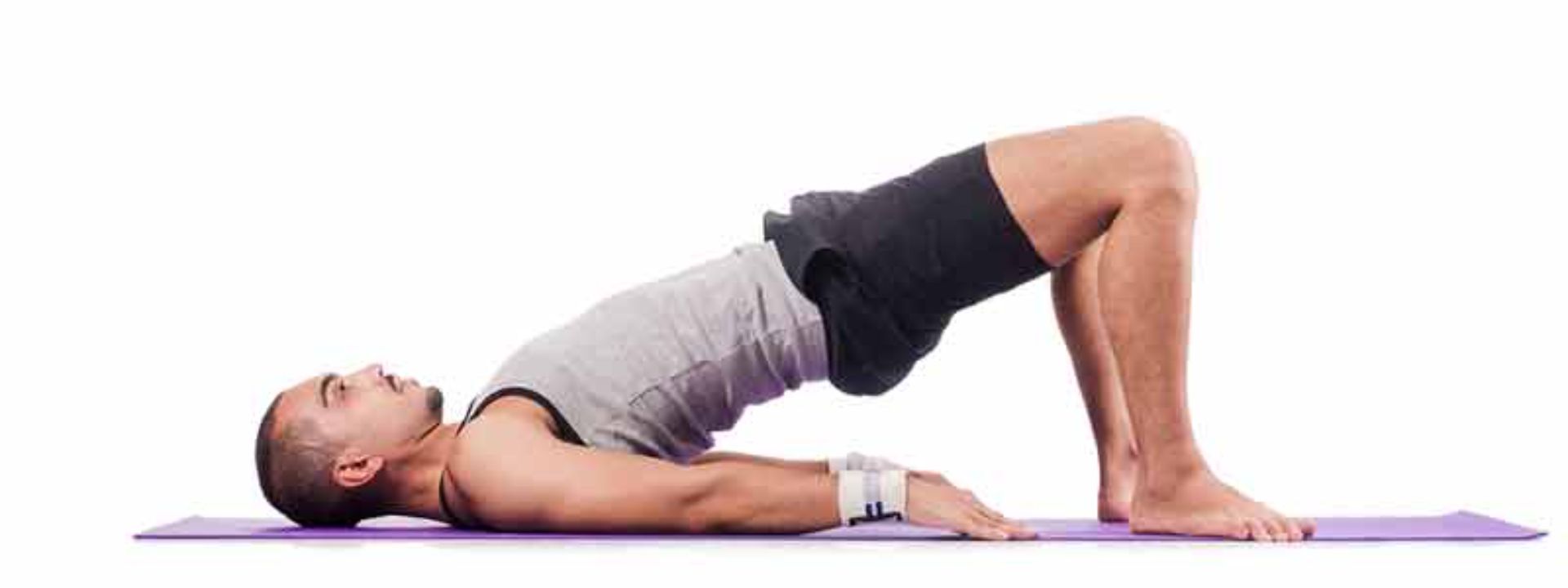Welcome to our comprehensive guide on male pelvic floor exercises. While these exercises have traditionally been associated with females, more and more men are discovering the benefits of pelvic floor strengthening. From improving prostate health to enhancing bladder control and alleviating urinary incontinence, male pelvic floor exercises can play a crucial role in maintaining overall pelvic health.
Many men may need to be made aware of the significance of the male pelvic floor muscles and how they impact daily life. The pelvic floor muscles provide support to the bladder, rectum, and prostate, and play a crucial role in bowel and bladder control, sexual function, and overall pelvic health.

Photo Credit: Memorial Sloan Kettering Cancer Center
Male pelvic floor pain is a common condition that can result from overuse, injury, or underlying medical issues. This discomfort can range from mild to severe and may significantly impact quality of life.
Male pelvic floor dysfunction is a term used to describe a range of issues related to the pelvic floor muscles, including pain, tension, or weakness. This condition can lead to urinary or fecal incontinence, sexual dysfunction, and other issues that can significantly affect a man’s overall health and well-being.
To fully understand the importance of male pelvic floor health, it’s essential to have a basic understanding of the pelvic floor anatomy and the role it plays in daily life.
Male pelvic floor exercises are an effective way of improving overall pelvic health. Not only can they strengthen the pelvic floor muscles, but they also provide numerous benefits such as:
Incorporating male pelvic floor exercises into your daily routine can significantly benefit pelvic floor health and function.
Male pelvic floor exercises can help address a range of conditions affecting the pelvic floor muscles. These exercises can be tailored to suit individual needs, offering targeted relief and improvement for specific issues. Here are some of the most common male pelvic floor conditions addressed by exercises:
Urinary incontinence is a common problem that affects many men, particularly as they age. It can be caused by a range of factors, including weak pelvic floor muscles. Male pelvic floor exercises can help improve bladder control and reduce the frequency of accidents. In particular, exercises that focus on strengthening the sphincter muscles can be effective for treating urinary incontinence.
Faecal incontinence is a condition in which an individual experiences involuntary bowel movements or leaks. This can be an embarrassing and distressing issue but can also be improved through targeted pelvic floor exercises. Strengthening the pelvic floor muscles can help improve bowel control, reduce the frequency of accidents and improve overall quality of life.

Photo Credit: gpointstudio
Erectile dysfunction is a common condition that affects many men, particularly those over the age of 40. It can be caused by a range of factors, including weak pelvic floor muscles. Pelvic floor exercises can help improve blood flow to the penis, increase pelvic muscle strength and improve overall sexual function.
Prostate surgery can often result in weakened pelvic floor muscles and incontinence. Male pelvic floor exercises can help improve bladder control, reduce the frequency of accidents and improve overall pelvic health after prostate surgery. A trained male pelvic floor therapist can work with individuals to develop an exercise plan tailored to their specific needs.
Bladder training is a technique used to improve bladder control. It involves teaching the bladder to hold urine for longer periods of time, gradually increasing the time between trips to the bathroom. Male pelvic floor exercises can be particularly effective when combined with bladder training, helping to strengthen pelvic floor muscles and improve overall bladder control.
Rectal prolapse is when part of the rectum protrudes from the anus. Weak pelvic floor muscles or other underlying health issues can cause it. Pelvic floor exercises can effectively improve pelvic floor strength and reduce the risk of rectal prolapse.
Bowel dysfunction is a common problem that can cause discomfort and embarrassment for many men. It can be caused by a range of factors, including weak pelvic floor muscles. Male pelvic floor exercises can help improve bowel control, reduce the frequency of accidents and improve overall quality of life.
CPPS is a condition that causes ongoing pain and discomfort in the pelvic area. It can be caused by a range of factors, including weak pelvic floor muscles. Male pelvic floor exercises can effectively reduce pain and improve overall pelvic health in individuals with CPPS.
Urinary retention is a condition in which an individual is unable to fully empty their bladder. Weak pelvic floor muscles or other underlying health issues can cause it. Pelvic floor exercises can be effective in improving bladder control and reducing the risk of urinary retention.
Performing male pelvic floor exercises can be a simple and effective way to improve pelvic floor health. Here are step-by-step instructions on how to perform various exercises:

Photo Credit: GQ
This form of training involves using a device to provide visual or auditory feedback on the effectiveness of your pelvic floor muscles contractions. Your physiotherapist or healthcare provider can guide you through this process.
If you’re having difficulty performing these exercises correctly, seeking the advice of a male pelvic floor therapist or a physiotherapist trained in pelvic floor dysfunction can be beneficial. Pelvic floor therapy may involve internal or external examinations and exercises to improve pelvic floor health.
Remember to start slowly and gradually increase the intensity of your pelvic floor exercises over time. It’s important to perform these exercises regularly to see positive results.
Incorporating male pelvic floor exercises into your daily routine is essential for achieving pelvic floor health and improving bladder and bowel control. Depending on your specific condition, there are a variety of exercises and techniques that you can perform to achieve optimal results.
If you are recovering from prostate surgery, it is essential to begin pelvic floor exercises as soon as your doctor allows. Start with gentle exercises, such as quick pelvic floor contractions, and gradually work your way up to longer contractions and more advanced exercises. It is best to avoid heavy lifting and strenuous activities during your recovery period.
If you are undergoing pelvic floor rehabilitation, your therapist may recommend specific exercises tailored to your needs. Performing these exercises regularly and consistently is important to see the most benefit. Your therapist may also incorporate biofeedback training or other techniques to help you achieve optimal results.
Pelvic floor exercises can help manage incontinence by strengthening the muscles that control bladder and bowel function. You can perform these exercises at home, starting with quick pelvic floor contractions and gradually increasing the duration and intensity of the contractions. Bladder training techniques can also be effective in managing incontinence by slowly increasing the time between trips to the bathroom.
If you suffer from voiding dysfunction or have difficulty controlling your rectum, pelvic floor exercises can be helpful. Specific exercises such as sphincter muscle training and pelvic floor relaxation can help improve muscle tone and control.
Techniques such as pelvic floor relaxation and male pelvic floor yoga can help if you suffer from pelvic muscle tension. These exercises focus on stretching and relaxation techniques to help release tension and alleviate pain.

Photo Credit: Park Sports Physical Therapy
No matter what your specific condition, incorporating male pelvic floor exercises into your daily routine can help improve pelvic floor health and address a variety of conditions. Consult your doctor or a male pelvic floor therapist to determine the best exercises and techniques for your needs.
Pelvic floor exercises for men, also known as Kegel exercises, involve tensing and relaxing the muscles that support the pelvic organs. A man can locate these muscles by trying to stop the flow of urine midstream or by tightening the muscles that prevent passing gas. Once identified, these muscles should be contracted for 5-10 seconds and then relaxed for the same amount of time.
To strengthen the pelvic floor muscles quickly, a man can do Kegel exercises several times a day. It can help to start with small sets (10-15 repetitions) and gradually increase as strength improves. It is also beneficial to incorporate these exercises into daily activities, such as while sitting at a desk or during commercial breaks on TV.
Symptoms of a weak pelvic floor in men can include urinary or bowel incontinence, difficulty starting and stopping the flow of urine, or erectile dysfunction. A healthcare professional can diagnose pelvic floor weakness through physical examination and discussing symptoms.
The time it takes to strengthen the pelvic floor varies for each individual. However, with consistent exercise, men might start to notice improvements in symptoms within a few weeks to a few months. For maximum benefit, pelvic floor exercises should become a regular part of a man’s routine.